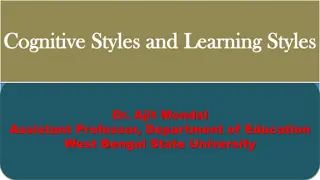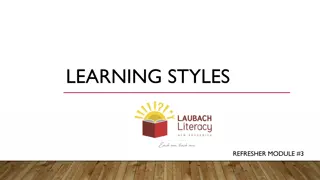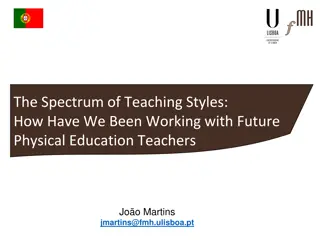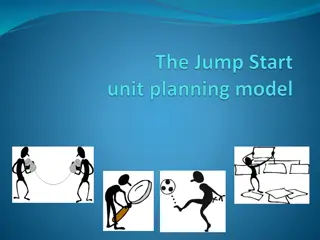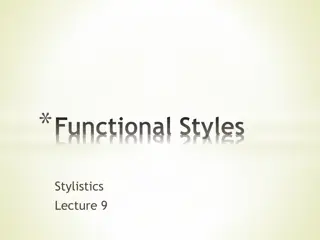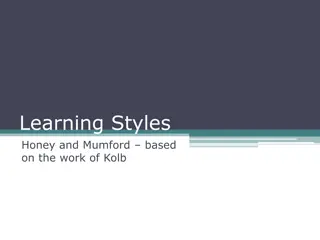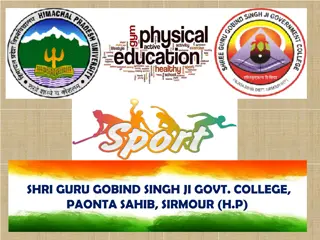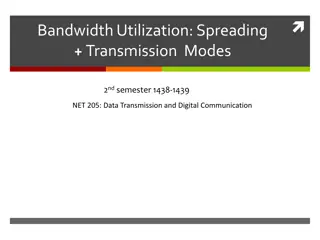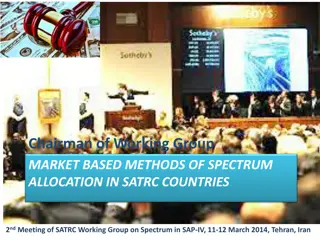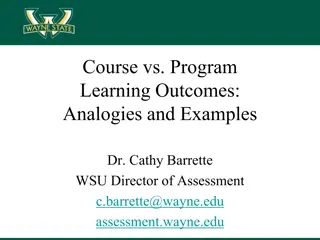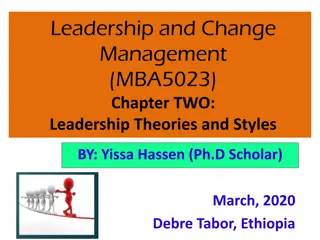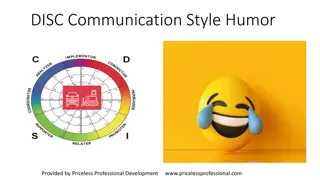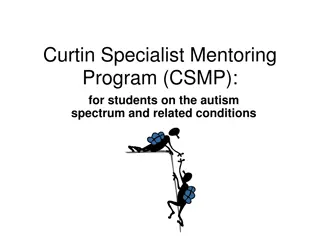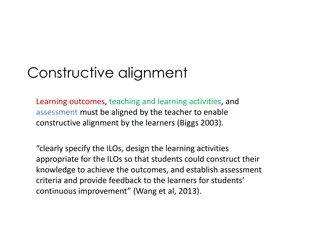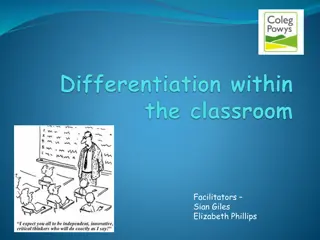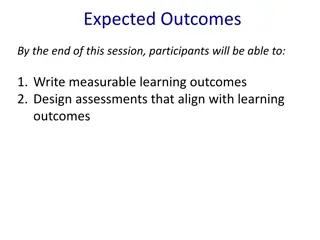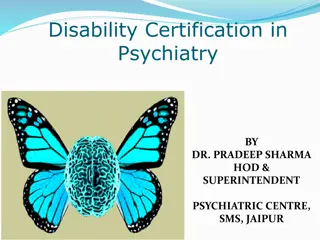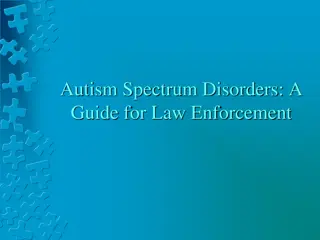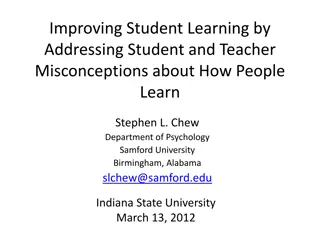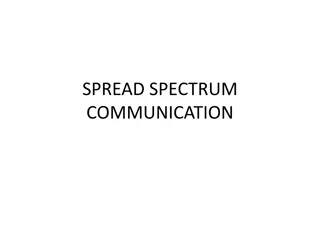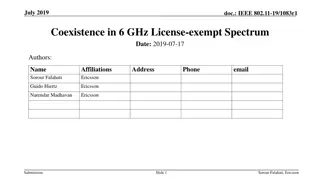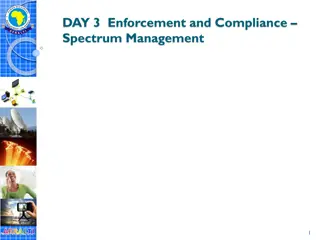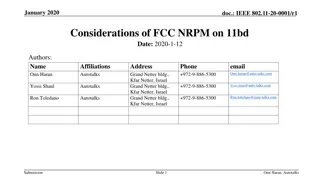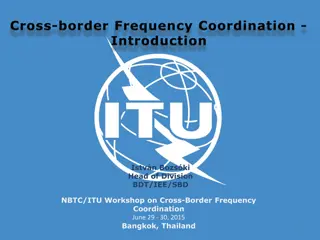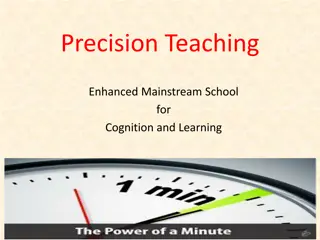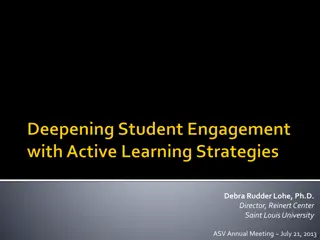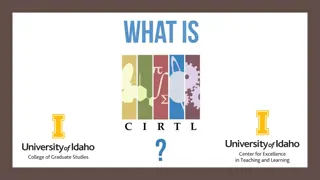The Spectrum in Education: Enhancing Teaching Styles and Learning Outcomes
Utilizing The Spectrum framework helps educators align teaching styles with syllabus objectives to create effective learning episodes. This common language fosters consensus among teachers, curriculum developers, and education professionals, enhancing pedagogical literacy and facilitating diverse educational goals.
Download Presentation

Please find below an Image/Link to download the presentation.
The content on the website is provided AS IS for your information and personal use only. It may not be sold, licensed, or shared on other websites without obtaining consent from the author. Download presentation by click this link. If you encounter any issues during the download, it is possible that the publisher has removed the file from their server.
E N D
Presentation Transcript
Brendan SueSee High school teacher 21 years University Lecturer 6 years Dad, Husband, sports coach cricket, netball, touch football.
Using The Spectrum to assist teachers meet syllabus/learning objectives WHY? Numerous syllabus documents has multi-dimensional objectives. Without Spectrum knowledge it would be difficult to implement them. The Spectrum provides a way to assist teachers in creating learning episodes to deliberately teach and provide opportunities for students to meet these objectives.
Syllabus Aims, goals and learning outcomes Why The Spectrum The Spectrum s ability to provide a common language allows consensus to be reached between teachers, educators, curriculum and syllabus writers, professional development providers and pre-service teacher educators about what teachers behaviour would look like using specific styles. This would hopefully lead to an alignment between syllabus aims and goals, and the teaching style/s required to create learning episodes to enable students to meet these goals (SueSee, 2020, p. 37).
Syllabus Aims, goals and learning outcomes Why The Spectrum If Mosston & Ashworth s (2008) Spectrum of Teaching Styles and Metzler s (2011) Instructional Models are considered, there are over 18 teaching styles or instructional models (Pill, Swabey & Penney, 2017). The Spectrum allows the development of pedagogical literacy for teachers.
Syllabus Aims, goals and learning outcomes Why The Spectrum SueSee and Barker (2019) suggest internationally, that in the last 15 years, numerous physical education (PE) syllabus documents use terms such as critical thinkers , creative thinking , self-directed , problem solvers , independent learners , self-monitor and self-directed learners (ACARA, 2016; Scottish National 3 Physical Education, 2012; SHAPE America Society of Health and Physical Educators, 2014; Skolverket, 2011). Scholars have highlighted the multidimensional goals of curriculum documents and suggested that diverse goals cannot be achieved alone through only one cluster style (Digelidis, Theodorakis, Zetou, & Dimas, 2006; Kulinna & Cothran, 2003; Syrmpas et al., 2017)
Syllabus Aims, goals and learning outcomes Why The Spectrum? guided discovery, inquiry, cooperative learning, individualised instruction, games for understanding and sport education (QSPES, 2004, p. 28). Tennis Australia accreditation coaching courses recommend that tennis coaches should combine the use of direct and discovery teaching styles, with the latter nominated as the preferred teaching style (Tennis Australia (2010a; 2010b). Movement is a powerful medium for learning, through which students can practise and refine personal, behavioural, social and cognitive skills (ACARA HPE, 2018, p. 4).
Syllabus Aims, goals and learning outcomes Why The Spectrum? Metzler (2011) identified five different names for Inquiry Teaching, outlining that no formal model has been developed. Similarly, Baldock and Pill (2017) identify seven different names for game-based or game-centered models. When viewed through The Spectrum, any given teacher needs to know a cluster of teaching styles to implement a model (Byra, 2020; SueSee et al., 2016),
So what am I doing (trying to??) S s learn about The Spectrum and explain GSA, Inquiry approach. Teach 3 physical activities (volleyball, Australian Football and Touch Football) using Styles A-H. Assessment 5 parts: 1. Plan a lesson choosing between from a GSA, Style C or Style F. 2. Teach the lesson to their peers using the chosen style. 3. Participants of the lesson provide feedback evaluating the application of the chosen style. 4. 500 word research paper outlining the strengths of the chosen style and where it can be applied in Australian curriculum documents. 5. What they would/would not change about their lesson based on the feedback they received from Q3.
Outcomes..? S s with Spectrum knowledge. S s with excellent knowledge about 3 styles and knowledge developed through experience as a teacher and a student. S s with exceptional knowledge of 1 style based on research and experience. I enjoyed how the assessment item was incredibly practical opposed to just another 2000 word assessment item. I wish many more of my assessment pieces were structured like this. Overall, fantastic course, it was very practical in that learning was demonstrated and experienced by us as students then we were given the chance to apply the practise also.
Research Pill, Hewitt, Edwards, Rankin, Davies, & Williams. Have placed TGfU, GSA and CLA on the Spectrum arguing that they are a cluster of styles and not one style. SueSee, Brendan and Pill, Shane and Edwards, Kenneth (2016) Reconciling approaches a game centred approach to sport teaching and Mosston's spectrum of teaching styles. European Journal of Physical Education and Sport Science, 2 (4). pp. 69-96. SueSee, Brendan and Pill, Shane and Hewitt, Mitch (2020) Reconciling approaches: Mosston and Ashworth s Spectrum of Teaching Styles as a tool to examine the complexity of any teaching (or coaching) approach. In: The spectrum of teaching styles in physical education. Taylor & Francis (Routledge), London, United Kingdom, pp. 73-84. SueSee, Brendan and Pill, Shane (2018) Game-based teaching and coaching as a toolkit of teaching styles. Strategies: A Journal for Physical and Sport Educators, 31 (5). pp. 21-28.
Research Have suggested that the Spectrum can assist MBP (Metzler) fly further as it provides the micropedagogy (minute by minute behaviour of the T & S s) in MBP again not one style but a cluster. Questioned why The Spectrum was not included as a model and arguing it can help answer q s raised by : Casey, MacPhail , Larsson & Quennerstedt (2020): Between hope and happening: Problematizing the M and the P in models- based practice, Physical Education and Sport Pedagogy, and Casey (2014) Models-based practice: great white hope or white elephant?, Physical Education and Sport Pedagogy, 19:1, 18-34 SueSee, Brendan and Pill, Shane and Davies, Michael and Williams, John (2021) 'Getting the Tip of the Pen on the Paper': How the Spectrum of Teaching Styles Narrows the Gap Between the Hope and the Happening. Journal of Teaching in Physical Education. pp. 1-10
Research Have applied the Spectrum to Sports Coaching building on the work of Hewitt (2015). The Spectrum of Sport Coaching Styles (2022) By Shane Pill, Brendan SueSee, Joss Rankin & Mitch Hewitt https://www.routledge.com/The-Spectrum-of-Sport-Coaching- Styles/Pill-SueSee-Rankin-Hewitt/p/book/9780367485184
References Pill, S., SueSee, B., Rankin, J., & Hewitt, M. (2021). The Spectrum of Sport Coaching Styles (1st ed.). Taylor and Francis. Retrieved from https://www.perlego.com/book/2998245/the-spectrum-of-sport-coaching-styles-pdf SueSee, Brendan (2020) Using The Spectrum to interrogate the Teaching Styles of physical education teachers. In: The Spectrum of Teaching Styles in Physical Education. Taylor & Francis (Routledge), Abingdon, United Kingdom, pp. 37-47. ISBN 978-0-367- 35718-4 SueSee, Brendan and Hewitt, Mitch and Pill, Shane (2020) The spectrum of teaching styles in physical education. Taylor & Francis (Routledge), London, United Kingdom. SueSee, Brendan and Pill, Shane and Davies, Michael and Williams, John (2021) 'Getting the Tip of the Pen on the Paper': How the Spectrum of Teaching Styles Narrows the Gap Between the Hope and the Happening. Journal of Teaching in Physical Education. pp. 1- 10.


